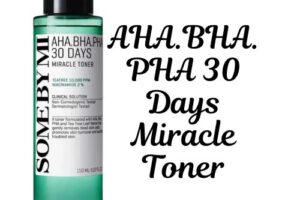Hyperpigmentation: Causes, Treatments, And Prevention
Understanding Hyperpigmentation
Hyperpigmentation is characterized by dark patches on the skin caused by excess melanin production. This condition occurs when melanocytes, the cells responsible for producing melanin, become overactive. The excess melanin results in uneven skin tone, leading to dark spots that can appear on various areas of the body, including the face, hands, and other sun-exposed regions.
Key Points:
- Hyperpigmentation can manifest in various forms, including age spots, melasma, and post-inflammatory hyperpigmentation.
- It is generally harmless but can cause distress or concern for those affected due to its impact on appearance.
- Various factors, such as sun exposure, hormonal changes, and skin injuries, can trigger hyperpigmentation, leading to increased melanin production.
Common Causes of Hyperpigmentation
Sun Exposure (Solar Lentigines):
When your skin is exposed to UV rays from the sun, it can trigger an increase in melanin production, leading to dark spots. These spots often show up on areas that get the most sun, like the cheeks, and can even affect younger people.
Hormonal Changes (Melasma):
Hormonal shifts—such as those during pregnancy, menopause, or hormone therapy—can cause a condition called melasma. This results in brownish, symmetrical patches on the face, and it’s more common in women.
Post-Inflammatory Hyperpigmentation (PIH):
This type of hyperpigmentation occurs after your skin has been injured or inflamed. You might notice dark spots appearing after acne, insect bites, or burns. These can appear on both the face and body.
Friction-Induced Hyperpigmentation:
Repeated friction from things like clothing or brushes can lead to darkening of the skin, especially in sensitive areas like the underarms, elbows, and knees.
Genetic Factors (Freckles):
Freckles are small brown spots that often appear on the cheeks and nose. They tend to be more noticeable in childhood and can run in families.
Medical Conditions and Medications:
Certain medical conditions, like Addison’s disease, and some medications can also lead to hyperpigmentation.
Types of Hyperpigmentation
Age Spots (Solar Lentigines):
These are brown or black spots that appear on areas of the skin frequently exposed to the sun, such as the face and hands. Age spots are more common in older adults or those who spend a lot of time in the sun.
Melasma (Chloasma):
Melasma presents as large, dark patches on the face. It often affects pregnant women, those using birth control, and individuals with medium to dark skin tones.
Post-Inflammatory Hyperpigmentation (PIH):
This type of hyperpigmentation shows up as dark spots that develop after inflammation of the skin. It’s commonly seen following conditions like acne or eczema.
Mechanism of Hyperpigmentation
Melanin Overproduction:
Hyperpigmentation occurs when the skin produces too much melanin, often as a protective response to factors like UV exposure, inflammation, or friction. This means that when your skin is stressed, it ramps up melanin production. If the skin’s natural turnover process is disrupted—due to hormonal changes or a weakened skin barrier—this excess melanin doesn’t shed as it normally would, leading to the formation of dark spots on the skin.
Treatment Options
Services for Hyperpigmentationm
- Laser Therapy:
- Fractional Laser Resurfacing: Such as the Fraxel laser, which targets pigmented areas while promoting skin renewal.
- Q-Switched Laser Treatment: Effective for removing dark spots and pigmentation.
- Intense Pulsed Light (IPL):
- IPL Photofacial: Helps to break up pigmentation and even out skin tone by targeting melanin.
- Chemical Peels:
- Glycolic Acid Peel: A superficial peel that can help with mild pigmentation issues.
- TCA Peel: A medium-depth peel for more significant pigmentation concerns.
Topical Creams
There are various creams that can help lighten dark spots. Common ingredients include:
- Hydroquinone
- Niacinamide
- Alpha Arbutin
- Cysteamine
- Vitamin C derivatives
- Kojic acid
- Retinoids
- Glycolic acid
Prevention Tips
Sun Protection:
To keep hyperpigmentation at bay, it’s essential to protect your skin from the sun. Make it a habit to apply a broad-spectrum sunscreen with at least SPF 30 every day, even when it’s cloudy. Reapply every two hours, especially if you’re spending time outdoors. Wearing protective clothing, such as wide-brimmed hats and long sleeves, can also help shield your skin from harmful UV rays.
Avoid Friction and Irritation:
Friction and irritation can lead to inflammation, which may worsen hyperpigmentation. Be gentle with your skin—avoid aggressive scrubbing or rough contact, especially on sensitive areas. This includes being cautious with tight clothing or accessories that can rub against your skin.
Healthy Skin Routine:
Maintaining a solid skincare routine is key to preventing pigmentation. Look for products that contain ingredients known to strengthen the skin barrier, such as ceramides, niacinamide, and hyaluronic acid. These ingredients help keep your skin healthy and resilient against factors that could trigger hyperpigmentation.
Avoid Over-the-Counter Lightening Products:
While it might be tempting to use over-the-counter lightening products, some can cause irritation or even worsen hyperpigmentation. It’s always best to consult with a dermatologist before trying any new products. They can recommend effective treatments tailored to your skin type and concerns, ensuring you achieve the best results without unnecessary irritation.
Consulting a Dermatologist
When to See a Doctor:
If you notice persistent or worsening pigmentation on your skin, it’s important to consult a dermatologist. Additionally, if your hyperpigmentation appears suddenly or is linked to underlying medical issues, seeking professional help is essential. Early intervention can help prevent further complications and ensure appropriate treatment.














Post Comment